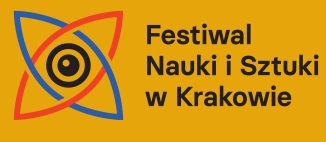Festyn Nauki - program wydziału
Wydział Informatyki, Elektroniki i Telekomunikacji
PREZENTACJE:
17.05.2019 - piątek, Miasteczko Festiwalowe na Rynku Głównym, godz. 1100 - 1800
18.05.2019 - sobota, Miasteczko Festiwalowe na Rynku Głównym, godz. 1100 - 1700
- „Urządzenia Internetu Rzeczy”
Prezentacja urządzeń Internetu Rzeczy budowanych w Katedrze Informatyki AGH pozwoli zapoznać się ze sposobami monitorowania przedmiotów obecnych w naszym otoczeniu za pomocą popularnych urządzeń wbudowanych. Jednocześnie zostaną pokazane potencjalne możliwości przetwarzania i wykorzystania zebranych danych.
- „Nowoczesne metody symulacji”
Nowoczesne metody symulacji komputerowych pozwalają m.in. przewidywać pogodę, oceniać wytrzymałość budynków i projektować bezpieczniejsze samochody. W ramach prezentacji przedstawione zostaną współczesne techniki i kierunki rozwoju symulacji komputerowych opartych o metodę elementów skończonych (FEM). Słuchacze dowiedzą się jak działają symulacje, jak zamodelować konkretne zjawisko oraz jaką moc obliczeniową trzeba wykorzystać, aby uzyskać wyniki o dużej dokładności.
- „Sztuczna inteligencja w robotyce” i pokaz robota Peppera (wykład i
pokaz na terenie AGH, piątek 17.05.19)
Na wykładzie zostaną omówione ostatnie osiągnięcia sztucznej inteligencji związane z zastosowaniami w robotyce (między innymi autonomiczne samochody, automatyczny naukowiec i robot humanoidalny). W szczególności uwzględnione zostaną metody uczenia maszynowego i sieci neuronowe, którym zawdzięczamy ogromny postęp. Podsumowaniem będzie demonstracja robota humanoidalnego Pepper, który przeprowadzi z człowiekiem wywiad o pracę. Zdjęcia Peppera można obejrzeć na stronie: https://www.softbankrobotics.com/emea/en/pepper
- „Elektronika wokół nas” - samochodzik line folower
Autonomiczny pojazd, poruszający się po trasie, wyznaczonej czarnymi liniami na białym tle. Jest to konstrukcja stworzona przez studentów z Koła Naukowego Elektroników, która bierze udział w międzynarodowych zawodach NXPCup i ma już na koncie sukcesy w minionych edycjach tego wydarzenia. Ten niewielkich rozmiarów pojazd autonomiczny, który automatycznie porusza się po trasie wyznaczonej przez dwie czarne linie na białym tle, odnajduje drogę wykorzystując wbudowane w nim sensory, m.in. czujnik optyczny.
- „Elektronika wokół nas” - niech Twój instrument przemówi - Vocoder
Vocoder jest efektem syntezującym dźwięk instrumentu oraz ludzkiej mowy. Projekt wykonany w formie aplikacji działającej w czasie rzeczywistym pozwala na filtrację sygnału instrumentu za pomocą głosu. W rezultacie brzmienie granych dźwięków jest tak zmodulowane, że wyraźnie słyszymy wypowiedziane do mikrofonu słowa. Prezentacja obejmuje pokaz działania programu za pomocą gitary elektrycznej.
- „Elektronika wokół nas”- Fale radiowe inaczej - budowa i działanie radaru
- „Elektronika wokół nas” - Elektronika łatwiejsza niż przypuszczasz – „elektroniczne LEGO”
- „Elektronika wokół nas” - Wspieranie prac diagnostycznych i
serwisowych – „multimedialna instrukcja obsługi”
Wspomaganie prac serwisowych poprzez zastosowanie metod sztucznej inteligencji oraz uczenia maszynowego w doborze prawidłowych technologii narzędzi oraz sekwencji postępowania. Nadzór nad jakością realizowanych prac remontowo-montażowych w trudnych warunkach środowiskowych. Predykcja i automatyczne wykrywanie różnego typu zagrożeń, zwłaszcza przy pracach remontowo-montażowych i diagnostycznych. Szybka lokalizacja pracowników i urządzeń.

- "Internet of Things devices”
Internet of Things devices that are designed and build at the AGH University of Science and Technology. The presentation will allow you to become familiar with the ways of controlling and monitoring items in our environment using common embedded platforms. Additionally, the processing possibilities and uses of the collected data will be shown.
- "Modern methods of computer simulations”
Modern methods of computer simulations allow to for example - anticipate the weather, estimate the durability of buildings and design safer cars.
As part of the presentation, modern techniques and directions of computer simulations based on the Finite Element Method will be presented (FEM).
Students will learn how simulations work, how to model a particular phenomenon and what computing power you need to use to get results with high accuracy.
- "Artificial intelligence in robotics" and the show of the Pepper
robot
The lecture will discuss the latest achievements in artificial intelligence related to applications in robotics (including autonomous cars, an automatic scientist and a humanoid robot). In particular, machine learning methods and neural networks, to which we owe tremendous progress, will be taken into account. A humanoid robot named Pepper will conduct a job interview.
- "Electronics around us" - a line folower car
A car "Line folower" - is an autonomous vehicle, traveling along the route marked with black lines on a white background, through the use of sensors.
We will present a student device that participates in NXPCup competitions and has successes in previous editions. It is an autonomous vehicle that independently moves along the route marked by two black lines on a white background. He finds the way using sensors built in it, for example optical sensor. - "Electronics around us" - let your instrument talk - Vocoder
Vocoder is sound effect that synthesis human voice and instrument sound. It is implemented as real time application within instrument signal is filtered by speech signal. In result spoken words are perceptible among played notes. Presentation contains live demonstration using electric guitar. - "Electronics around us" - Radio waves from another way:
radar – how it works, use (eg. object detection, parking sensors,
measurement of speed)
- "Electronics around us" - Electronics easier than you think –
"the electronic LEGO"
Principles for measuring dustiness outside and inside buildings in IoT systems. Showing which factors influence the increase in measured values. Demonstration involving the smoke of a certain volume and purification using a purifier. The entire variability of pollination will be monitored by the presented system. Visualization of measurement data. Presentation of our website and defining the requirements that the system must meet in order to effectively visualize the data. Presentation of the instructions how you can construct a dust meter yourself. Show the code and operation of such devices.
- "Electronics around us" - Supporting diagnostic and service work -
"multimedia user manua
Supporting service works through the use of artificial intelligence methods and machine learning in the selection of correct tool technologies and sequence of procedures. Supervision of the quality of renovation and assembly work carried out in difficult environmental conditions Prediction and automatic detection of various types of threats, especially during renovation, assembly and diagnostic work. Quick location of employees and devices
